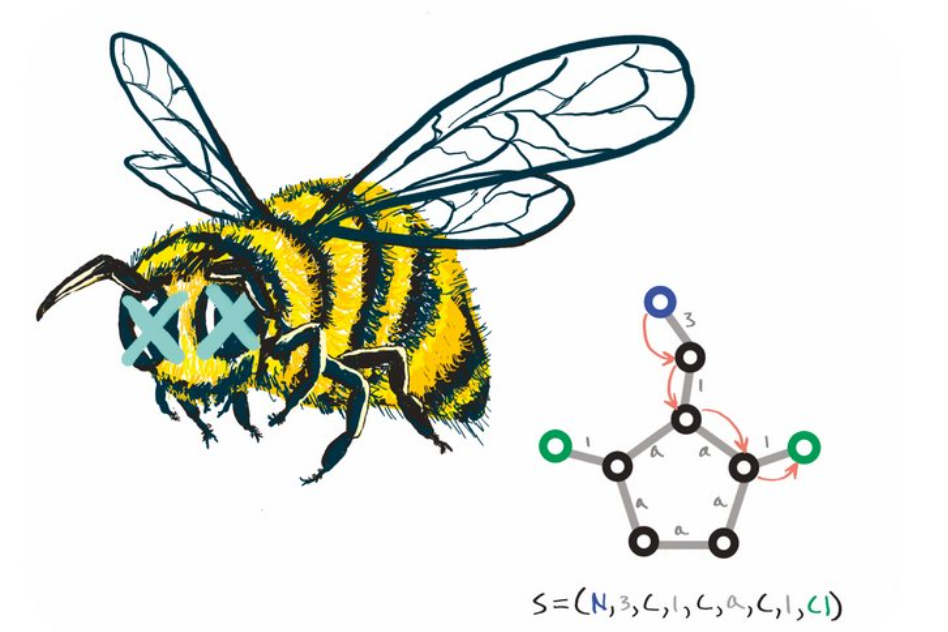Graph Kernels and SVM to Predict Bee Toxicity

Honey bees and pesticides are both vital to food security–so how do we ensure that one isn’t harmed by the other?
To help address this problem, we used graph kernel transformations and support vector machines to produce a model capable of predicting whether a molecular structure is likely to be acutely toxic to bees. Key to the process is the idea of transforming the graph representations of molecules (having many different sizes and topologies) into a latent space so the support vector classifier can learn to separate them into categories–essentially, learning rules for what molecular motifs tend to add up to a toxic substance.
Read the paper at the Journal of Chemical Physics, and check out the code on GitHub. You can also listen to an interview with my coauthor and me on Oregon State University’s PolliNation podcast.